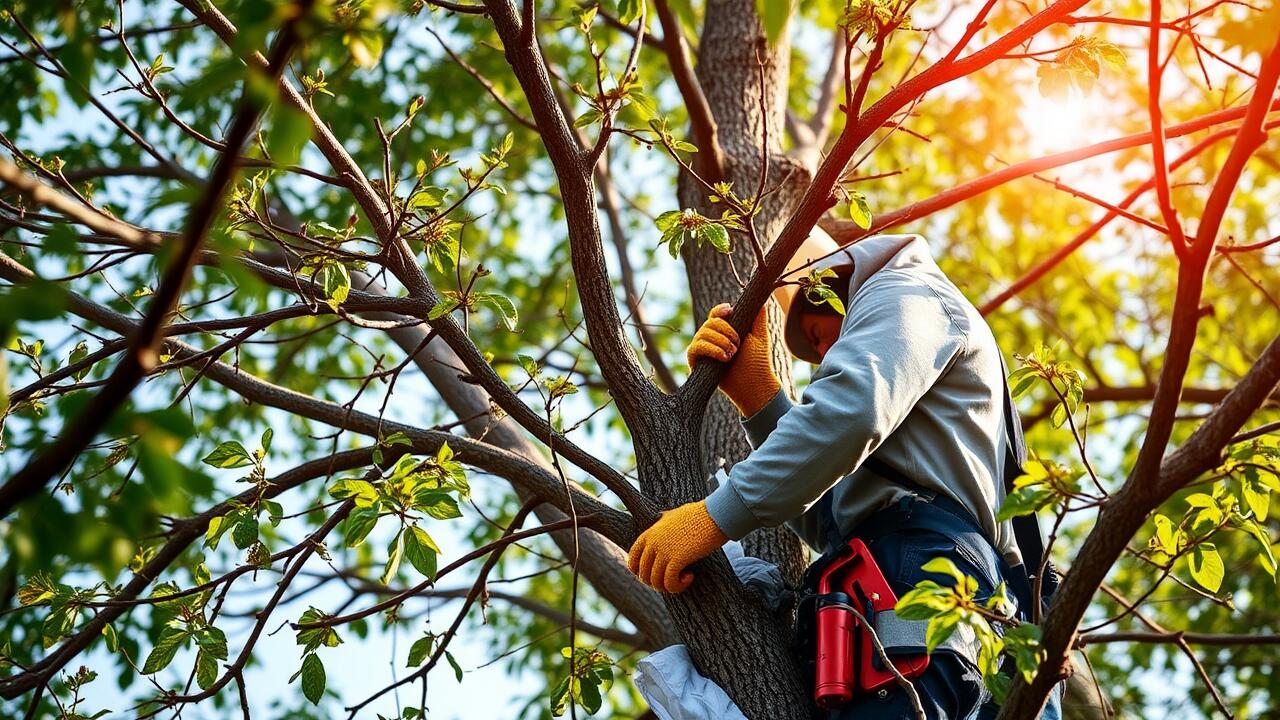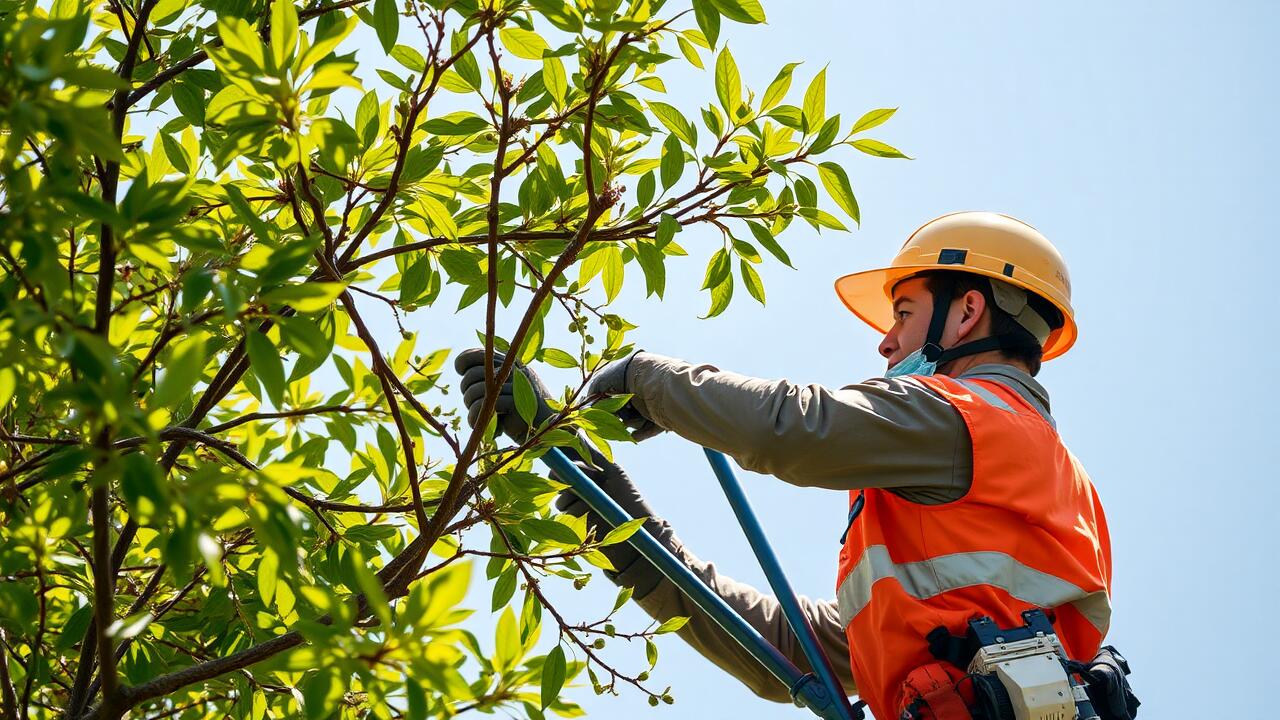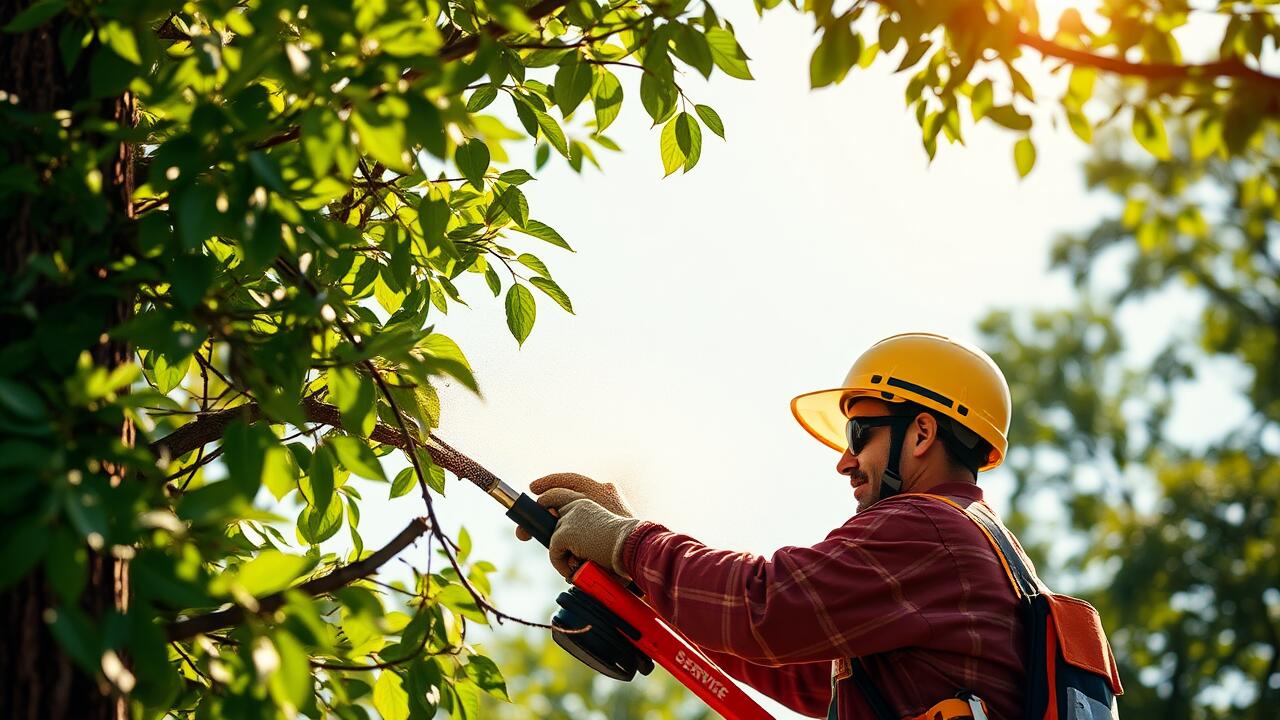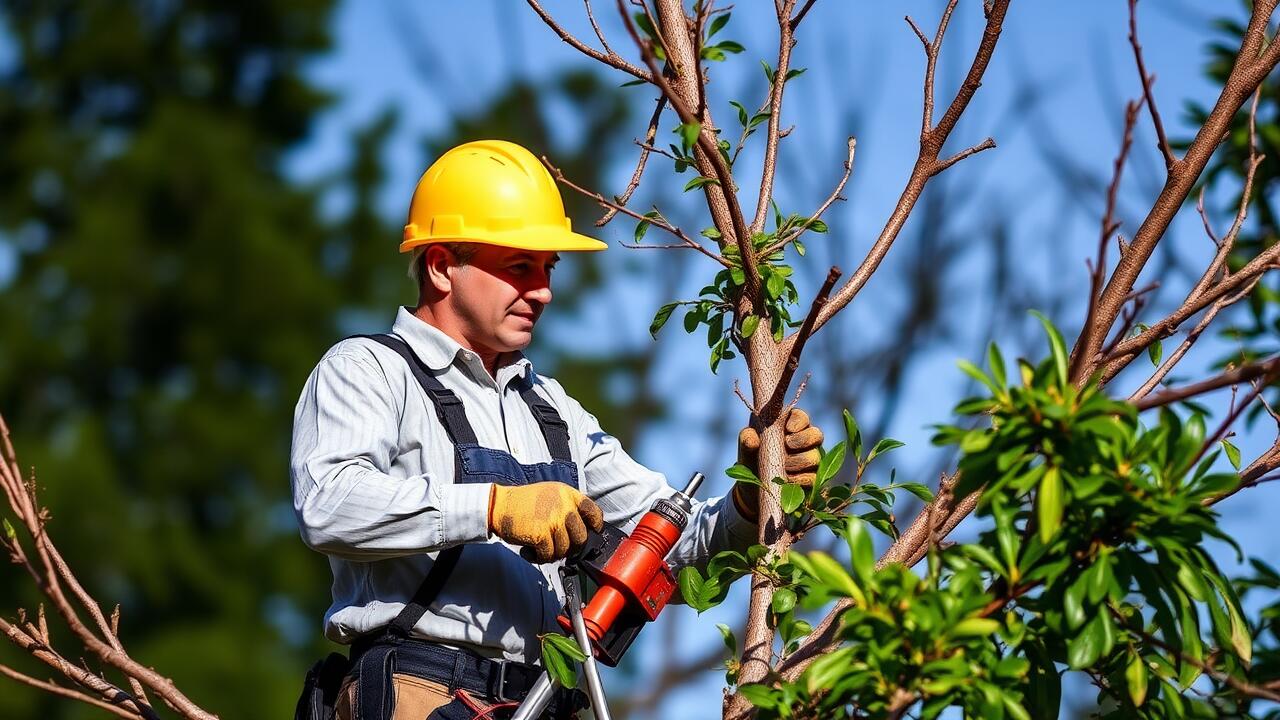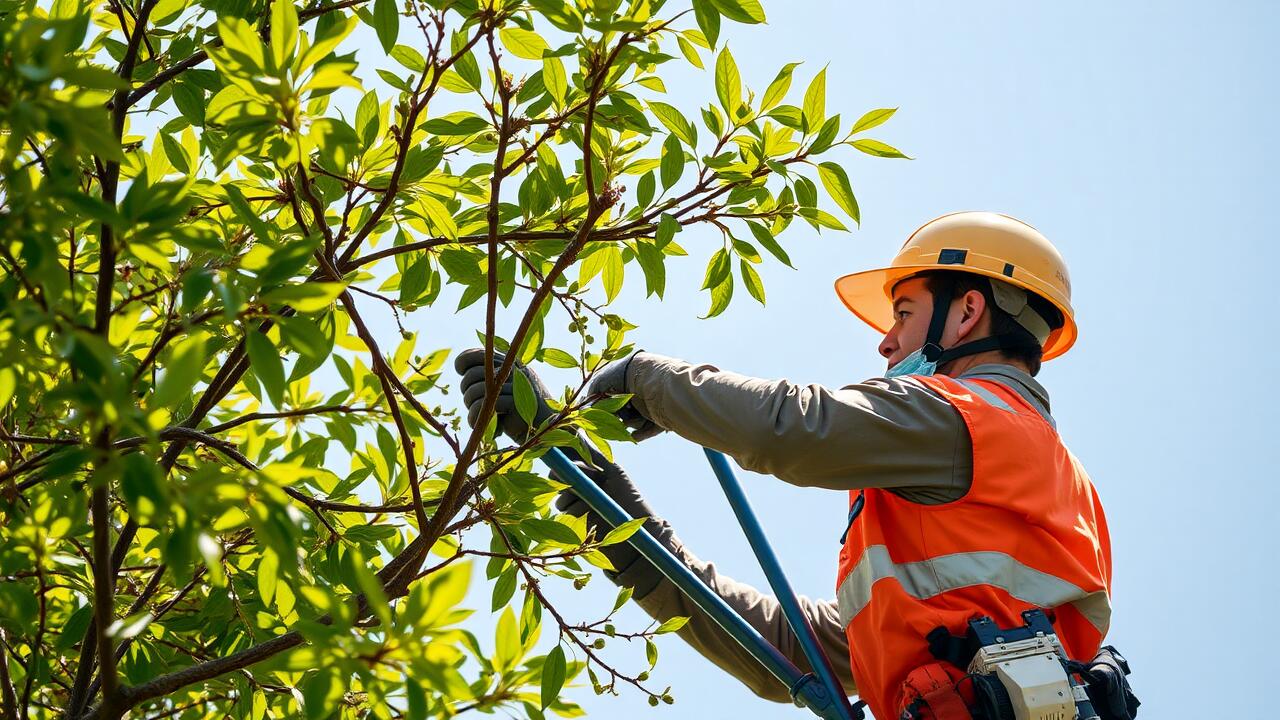
Techniques for Young Trees
Young trees require careful attention to ensure proper growth and structural integrity. When initiating tree pruning, it is essential to focus on establishing a strong central leader and removing any competing stems. Thinning out crowded branches improves air circulation and sunlight penetration, fostering healthier development. Regular inspections can help identify weaknesses early, allowing for timely intervention.
Implementing Tree Pruning and Trimming in South Downtown, Atlanta, aids in promoting optimal form and minimizing potential issues down the line. Pruning at an early stage not only supports a more aesthetically pleasing shape but also encourages the tree to invest energy in establishing its root system. Proper techniques ensure trees grow strong and resilient against environmental stressors.
Establishing Proper Structure in Young Growth
Establishing a strong structure in young trees is fundamental for their long-term health and stability. Begin by assessing the tree's central leader, which is the primary upward stem that dictates shape and growth. Removing competing branches that vie for this dominant role helps ensure that energy focuses on a singular growth point. Additionally, it's essential to maintain an open canopy, allowing sunlight to reach the inner branches. This can be achieved by selectively thinning branches, promoting better airflow and minimizing the risk of disease.
When engaging in tree pruning and trimming in Inman Park, Atlanta, pay attention to branch angles and attachment points. Ideally, branches should grow at a 45 to 60-degree angle from the trunk, as this configuration supports strength and resilience against wind and weight. By regularly monitoring and adjusting the structure through careful pruning, you can encourage a balanced form that not only enhances the tree’s appearance but also supports its growth. Young trees benefit significantly from this early attention, setting the foundation for a thriving, mature landscape.
Revitalizing Overgrown Trees
Overgrown trees often present unique challenges that require strategic intervention to restore balance and health. The first step in revitalizing such trees involves assessing their overall condition and identifying any unhealthy branches or competing leaders. By removing excessively dense growth, the tree can receive more sunlight and airflow, promoting better health. Focus on shaping the tree’s structure to ensure that it can support future growth without overcrowding itself. This creates a more open canopy, which is essential for its vitality.
After clearing away the most problematic branches, consider the long-term development of the tree. Regular maintenance through techniques like selective thinning will help prevent the tree from becoming overgrown again. Homeowners in the area can benefit from services specializing in Tree Pruning and Trimming in Cabbagetown, Atlanta. Such professional assistance ensures that revitalization efforts lead to a healthier and more aesthetically pleasing tree for years to come.
Strategies for Restoring Balance and Shape
Restoring balance and shape in overgrown trees requires careful assessment of the tree's structure. Start by identifying any branches that contribute to an unbalanced appearance or overcrowding within the canopy. Target these branches for removal to create a more open and airy environment, allowing sunlight to penetrate the inner foliage. This process helps improve air circulation and encourages healthy growth, ultimately enhancing the overall shape of the tree.
Throughout this process, consider maintaining the tree's natural form while selectively reducing its size. Cut back long branches that disrupt symmetry and ensure that the remaining limbs are evenly spaced. It is essential to avoid over-pruning, as this can lead to stress and hinder recovery. Tree pruning and trimming in Druid Hills, Atlanta, can benefit greatly from professional guidance, ensuring that each cut contributes to a well-balanced and aesthetically pleasing tree.
Dealing with Diseased or Damaged Trees
When addressing diseased or damaged trees, early detection is crucial. Identifying symptoms such as browning leaves, unusual growth patterns, or visible decay allows for timely intervention. Once the issues are recognized, it is essential to remove affected branches to prevent the spread of disease. Proper techniques for cutting help minimize stress on the tree and promote healing. It's recommended to use clean, sharp tools, ensuring cuts are made at the right angle to protect healthy wood.
In Cabbagetown, Atlanta, tree owners can benefit from professional services for tree pruning and trimming. These experts evaluate the overall health of the tree before making strategic cuts. This process not only helps in recovery but also strengthens the tree against future threats. Emphasizing the importance of regular maintenance and monitoring can significantly improve a tree's chances of thriving despite past injuries or infections.
Pruning for Recovery and Prevention
Pruning plays a critical role in the recovery and prevention of disease in trees. When identifying damaged or diseased branches, it is essential to remove them promptly to limit the spread of pathogens. Cleaning cutting tools before and after each use helps prevent contamination between trees. Careful assessment of tree health allows for targeted pruning that not only removes affected areas but also encourages healthy growth by improving air circulation and light penetration.
Tree pruning can be particularly beneficial for maintaining the overall vigor of urban trees, such as those found in Cabbagetown, Atlanta. Regular maintenance through proper pruning techniques can fortify trees against environmental stresses and pests. Ensuring that trees are pruned appropriately not only promotes aesthetics but also contributes to the long-term health of the urban canopy, helping to preserve the greenery that enhances this community.
FAQS
What is the best time of year to prune young trees?
The best time to prune young trees is during late winter or early spring before new growth begins, as this helps minimize stress on the tree and encourages healthy development.
How can I establish a proper structure in young tree growth?
To establish a proper structure in young trees, focus on removing any competing leaders, maintaining a central leader, and ensuring that lower branches are pruned to encourage upward growth.
What should I do if my overgrown tree looks unbalanced?
If your overgrown tree appears unbalanced, you can restore its shape by selectively pruning back overextending branches and removing any dead or crossing limbs to enhance its overall symmetry.
How can pruning help a diseased tree?
Pruning can help a diseased tree by removing infected branches and improving air circulation, which reduces the spread of disease and allows for better light penetration and healthy growth.
Is there a specific technique for pruning trees that have suffered storm damage?
Yes, when pruning trees that have suffered storm damage, focus on removing broken or split branches, making clean cuts just above the branch collar to promote healing, and avoid excessive pruning to maintain the tree's health.
